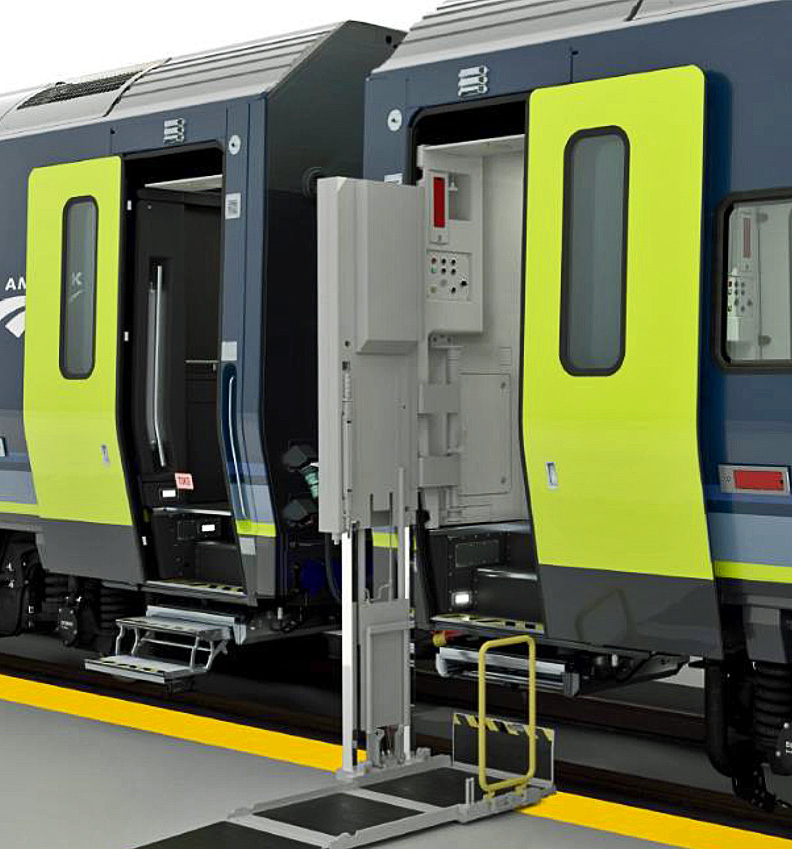Found this on pp. 125-126 of Amtrak's FY 2022-2027 Five Year Plans:
"The passenger car closest to the locomotive will contain a battery" seems to imply that the battery will be in a car that also carries passengers. And there is no mention of a "supplemental powered truck" in the battery-diesel description. Seems to me that acceleration just pulling into and out of NYP would not be of enough concern to justify the cost of the additional powered truck.
Twenty-six (26) catenary-diesel dual-power trainsets,
consisting of an ALC-42E locomotive and six passenger
cars, for use on the Downeaster, Vermonter, Pennsylvanian,
Palmetto, Carolinian and Keystone Service. The passenger car
closest to the locomotive will be an Auxiliary Power Vehicle
(APV) containing a pantograph, transformer cabinet and
supplemental powered truck for use in electrified territory;
power drawn from the APV will also be fed to the traction
motors in the locomotive to ensure sufficient acceleration
when operating on the Northeast Corridor (NEC).
Fifteen (15) battery-diesel hybrid trainsets with a short
term option to acquire two more), consisting of an ALC-42E
locomotive and six passenger cars, for use on the Empire Service,
Ethan Allen Express, Adirondack, and Maple Leaf. The passenger
car closest to the locomotive will contain a battery which will
supply electricity to the locomotive for power when operating
around New York Penn Station, eliminating the need for third rail
propulsion.
"The passenger car closest to the locomotive will contain a battery" seems to imply that the battery will be in a car that also carries passengers. And there is no mention of a "supplemental powered truck" in the battery-diesel description. Seems to me that acceleration just pulling into and out of NYP would not be of enough concern to justify the cost of the additional powered truck.






































